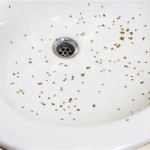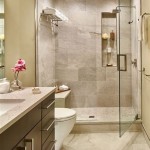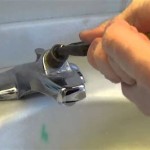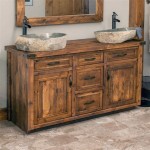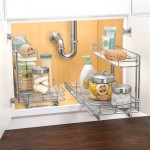How To Change a Bathroom Vent Light
Changing a bathroom vent light is a common home maintenance task that most individuals with basic electrical knowledge can undertake. Replacing the bulb or the entire fixture can significantly improve the functionality and aesthetics of a bathroom. This article provides a comprehensive guide to safely and effectively changing a bathroom vent light.
Safety Precautions
Before commencing any electrical work, safety must be the paramount concern. Electricity poses a significant risk when handled improperly. Therefore, adherence to the following safety precautions is crucial:
Turn off the Power: The most critical step is to de-energize the circuit. Locate the circuit breaker that controls the bathroom vent light and switch it to the "Off" position. Double-check that the light is indeed off by attempting to turn it on. If it remains off, the power is successfully disconnected.
Use a Voltage Tester: Even after switching off the circuit breaker, it's advisable to use a non-contact voltage tester to verify that no electricity is flowing to the fixture. Place the tester near the wires and the fixture itself. If the tester indicates the presence of voltage, double-check the circuit breaker and consult a qualified electrician if necessary.
Wear Safety Glasses: Debris, dust, or small particles can dislodge during the process. Wearing safety glasses protects the eyes from potential injury.
Use Insulated Tools: Electrical tools should have insulated handles to protect against accidental electrical shock. Ensure the insulation is in good condition and free from cracks or damage.
Work in a Dry Environment: Bathrooms are inherently damp environments. Ensure the area around the vent light is dry before commencing work. Avoid working with wet hands or standing in water.
Replacing the Light Bulb
The simplest scenario involves replacing a burnt-out light bulb. This task is typically straightforward and requires minimal tools.
Accessing the Bulb: Most bathroom vent lights have a lens cover that needs to be removed to access the bulb. The method for removing the cover varies depending on the fixture design. Some covers are held in place by spring clips, while others may be secured with screws. Gently pry or unscrew the cover, taking care not to damage it.
Identifying the Bulb Type: Once the cover is removed, observe the type of bulb installed. Common types include incandescent, fluorescent, and LED bulbs. Note the bulb's wattage and base type (e.g., A19, E26). It's essential to replace the bulb with one of the same type and wattage to avoid damaging the fixture or overloading the circuit.
Removing the Old Bulb: If the bulb is an incandescent type, allow it to cool down completely before handling it. Grasp the bulb firmly and twist it counterclockwise to remove it from the socket. For fluorescent or LED bulbs, there may be a locking mechanism that needs to be released before removing the bulb.
Installing the New Bulb: Align the base of the new bulb with the socket and twist it clockwise until it is securely in place. Avoid over-tightening the bulb, as this can damage the socket.
Replacing the Lens Cover: Align the lens cover with the fixture and reattach it using the appropriate method (spring clips or screws). Ensure the cover is securely in place to prevent it from falling.
Testing the Light: After replacing the bulb and the lens cover, switch the circuit breaker back to the "On" position. Turn on the bathroom vent light to verify that the new bulb is working correctly. If the light does not turn on, double-check that the bulb is properly installed and that the circuit breaker is not tripped.
Replacing the Entire Fixture
If the existing bathroom vent light fixture is damaged, outdated, or malfunctioning, it may be necessary to replace the entire unit. This task is more complex than replacing a bulb and requires a higher level of electrical knowledge.
Removing the Old Fixture: After turning off the power to the circuit, remove the lens cover and the light bulb. Locate the screws or clips that secure the fixture to the ceiling. Remove these fasteners to detach the fixture. Gently lower the fixture, being mindful of the electrical wires connected to it.
Disconnecting the Wiring: Use a screwdriver to carefully disconnect the electrical wires from the old fixture. Typically, there will be three wires: a black (hot) wire, a white (neutral) wire, and a green or bare copper (ground) wire. Use wire nuts to disconnect the wires. Take note of which wire is connected to each terminal on the old fixture, as this will be necessary for connecting the new fixture.
Preparing the New Fixture: Unpack the new bathroom vent light fixture and inspect it for any damage. Read the manufacturer's instructions carefully to understand the wiring diagram and installation procedure. Ensure that all necessary mounting hardware is included.
Connecting the Wiring: Connect the electrical wires to the new fixture, matching the colors to the corresponding terminals on the fixture. Use new wire nuts to secure the connections. Ensure that the wire nuts are tightened properly to prevent the wires from coming loose. The black wire from the ceiling connects to the black wire on the fixture (hot), the white wire from the ceiling connects to the white wire on the fixture (neutral), and the green or bare copper wire from the ceiling connects to the green or bare copper wire on the fixture (ground).
Mounting the New Fixture: Align the new fixture with the mounting bracket or holes in the ceiling. Secure the fixture using the screws or clips provided. Ensure that the fixture is securely attached to the ceiling and that it is level.
Installing the Light Bulb and Lens Cover: Install the appropriate light bulb into the new fixture. Align the lens cover with the fixture and reattach it using the provided hardware. Ensure that the cover is securely in place.
Testing the New Fixture: Switch the circuit breaker back to the "On" position. Turn on the bathroom vent light to verify that the new fixture is working correctly. Check that the light illuminates properly and that the fan (if included) is functioning as expected. If the fixture does not work, double-check the wiring connections and the circuit breaker.
Dealing with Common Issues
Several common issues may arise during the process of changing a bathroom vent light. Understanding these issues and how to address them can help ensure a successful outcome.
Stripped Screws: Screws can become stripped over time, making it difficult to remove the lens cover or the fixture itself. Using a rubber band or steel wool between the screwdriver and the screw head can provide additional grip. Alternatively, a screw extractor tool can be used to remove stripped screws.
Damaged Wiring: Old wiring can become brittle and cracked. If the wiring is damaged, it's essential to repair or replace it before installing a new fixture. Damaged wiring poses a fire hazard and can lead to electrical shocks. Consult a qualified electrician if you are uncomfortable working with wiring.
Incorrect Bulb Type: Using the wrong type of bulb can damage the fixture or overload the circuit. Always use the recommended bulb type and wattage specified by the manufacturer.
Loose Wiring Connections: Loose wiring connections can cause the light to flicker or not work at all. Ensure that all wiring connections are secure and that the wire nuts are tightened properly.
Fixture Not Level: If the fixture is not level after installation, it can look unsightly. Use a level to ensure that the fixture is properly aligned before tightening the mounting screws.
Fan Not Working: If the bathroom vent light includes a fan, ensure that the fan is properly connected and that the vent is not blocked. A blocked vent can reduce the fan's effectiveness and lead to moisture buildup in the bathroom.
By following these guidelines and taking appropriate safety precautions, individuals can successfully change a bathroom vent light and improve the functionality and appearance of their bathroom. When in doubt, it's always best to consult a qualified electrician.

Install A New Bathroom Vent Fan Light The San Fernando Valley Sun

Panasonic Whisperlight Bathroom Fan How To Remove Lightbulb

Broan Nutone Bath Fan Model 765h80l Disassembly Repair Help

How To Replace Bathroom Light In A Vent Fan Easy Process For Changing The Bulb By Diynate

How To Install A Bathroom Fan Step By Guide Bob Vila

Update An Existing Bathroom Exhaust Fan Cover Remodelaholic

How To Clean Replace Light Broan Model 678 Exhaust Fan

How To Replace Your Bathroom Exhaust Fan Light Bulb Step By Homelyville

How To Remove The Light Cover On A Bathroom Fan

How To Install A Bathroom Fan Diy Family Handyman
Related Posts
